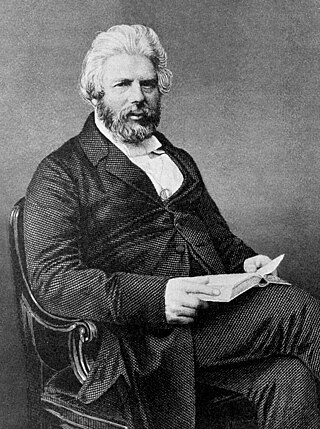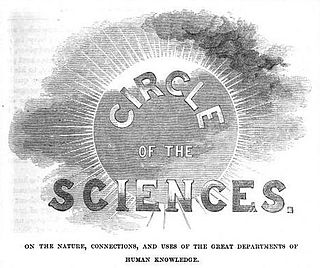
Gothic fiction, sometimes called Gothic horror, is a loose literary aesthetic of fear and haunting. The name refers to Gothic architecture of the European Middle Ages, which was characteristic of the settings of early Gothic novels.

Robert Chambers was a Scottish publisher, geologist, evolutionary thinker, author and journal editor who, like his elder brother and business partner William Chambers, was highly influential in mid-19th-century scientific and political circles.

Elizabeth Cleghorn Gaskell, often referred to as Mrs Gaskell, was an English novelist, biographer, and short story writer. Her novels offer a detailed portrait of the lives of many strata of Victorian society, including the very poor. Her first novel, Mary Barton, was published in 1848. Gaskell's The Life of Charlotte Brontë, published in 1857, was the first biography of Charlotte Brontë. In this biography, she wrote only of the moral, sophisticated things in Brontë's life; the rest she omitted, deciding certain, more salacious aspects were better kept hidden. Among Gaskell's best known novels are Cranford (1851–1853), North and South (1854–1855), and Wives and Daughters (1864–1866), all of which were adapted for television by the BBC.

James Payn was an English novelist and editor. Among the periodicals he edited were Chambers's Journal in Edinburgh and the Cornhill Magazine in London.
British literature is literature from the United Kingdom of Great Britain and Northern Ireland, the Isle of Man, and the Channel Islands. This article covers British literature in the English language. Anglo-Saxon literature is included, and there is some discussion of Latin and Anglo-Norman literature, where literature in these languages relate to the early development of the English language and literature. There is also some brief discussion of major figures who wrote in Scots, but the main discussion is in the various Scottish literature articles.
John Andrew Sutherland is a British academic, newspaper columnist and author. He is Emeritus Lord Northcliffe Professor of Modern English Literature at University College London.

William Chambers of Glenormiston was a Scottish publisher and politician, the brother of Robert Chambers. The brothers were influential in the mid-19th century, in both scientific and political circles.
David Daiches was a Scottish literary historian and literary critic, scholar and writer. He wrote extensively on English literature, Scottish literature and Scottish culture.

The three-volume novel was a standard form of publishing for British fiction during the nineteenth century. It was a significant stage in the development of the modern novel as a form of popular literature in Western culture.

The Coral Island: A Tale of the Pacific Ocean (1857) is a novel written by Scottish author R. M. Ballantyne. One of the first works of juvenile fiction to feature exclusively juvenile heroes, the story relates the adventures of three boys marooned on a South Pacific island, the only survivors of a shipwreck.
Literary realism is a literary genre, part of the broader realism in arts, that attempts to represent subject-matter truthfully, avoiding speculative fiction and supernatural elements. It originated with the realist art movement that began with mid-nineteenth-century French literature (Stendhal) and Russian literature. Literary realism attempts to represent familiar things as they are. Realist authors chose to depict every day and banal activities and experiences.
The social novel, also known as the social problemnovel, is a "work of fiction in which a prevailing social problem, such as gender, race, or class prejudice, is dramatized through its effect on the characters of a novel". More specific examples of social problems that are addressed in such works include poverty, conditions in factories and mines, the plight of child labor, violence against women, rising criminality, and epidemics because of over-crowding and poor sanitation in cities.
Christian Isobel Johnstone (1781–1857) was a prolific journalist and author in Scotland in the nineteenth century. She was a significant early feminist and an advocate of other liberal causes in her era. She wrote anonymously, and under the pseudonym Margaret Dods. She is highlighted as one of the first paid female editors of a journal.
"The Iron Shroud" or less commonly known as the "Italian Revenge" is a short story of Gothic fiction written by William Mudford in 1830 and published in Blackwood's Edinburgh Magazine and also as a twenty four page chapbook. It is a classic predicament story about a noble Italian hero who is confined in a continuously and imperceptibly contracting iron torture chamber. In the story, the chamber walls and ceiling are slowly contracting, day by day, through mechanical means, to the point of eventually crushing and enveloping the victim, thus metaphorically becoming his iron shroud. The story is considered to have provided Edgar Allan Poe with the idea of the shrinking cell in his short story "The Pit and the Pendulum" and it is viewed as Mudford's most famous tale.
William Henry Oliphant Smeaton, sometimes using the pen name Oliphant Smeaton, was a Scottish writer, journalist, editor, historian and educator. He was popularly known for his writing on Australian life and literature for various British publications as well as for his adventure and children's fiction novels during the 1890s. Later in his career, Smeaton also published books on Scottish antiquities and edited English literary text, ballads and collections of verse and prose. His best known work, The Life and Works of William Shakespeare (1911), was especially successful and enjoyed several reprints. He also contributed several biographies for the "Famous Scots Series" published by Oliphant, Anderson and Ferrier.

Orr's Circle of the Sciences was a scientific encyclopedia of the 1850s, published in London by William Somerville Orr.

Kenneth Womack is an American writer, literary critic, public speaker, and music historian, particularly focusing on the cultural influence of the Beatles. He is the author of the bestselling Solid State: The Story of Abbey Road and the End of the Beatles and John Lennon, 1980: The Last Days in the Life.

Romanticism in Scotland was an artistic, literary and intellectual movement that developed between the late eighteenth and the early nineteenth centuries. It was part of the wider European Romantic movement, which was partly a reaction against the Age of Enlightenment, emphasising individual, national and emotional responses, moving beyond Renaissance and Classicist models, particularly into nostalgia for the Middle Ages. The concept of a separate national Scottish Romanticism was first articulated by the critics Ian Duncan and Murray Pittock in the Scottish Romanticism in World Literatures Conference held at UC Berkeley in 2006 and in the latter's Scottish and Irish Romanticism (2008), which argued for a national Romanticism based on the concepts of a distinct national public sphere and differentiated inflection of literary genres; the use of Scots language; the creation of a heroic national history through an Ossianic or Scottian 'taxonomy of glory' and the performance of a distinct national self in diaspora.

The novel in Scotland includes all long prose fiction published in Scotland and by Scottish authors since the development of the literary format in the eighteenth century. The novel was soon a major element of Scottish literary and critical life. Tobias Smollett's picaresque novels, such as The Adventures of Roderick Random and The Adventures of Peregrine Pickle mean that he is often seen as Scotland's first novelist. Other Scots who contributed to the development of the novel in the eighteenth century include Henry Mackenzie and John Moore.
John Edgar Browning is an American author, editor, and scholar known for his nonfiction works about the horror genre and vampires in film, literature, and culture. Previously a visiting lecturer at the Georgia Institute of Technology, he is now a professor of liberal arts at the Savannah College of Art and Design in Atlanta, Georgia.











